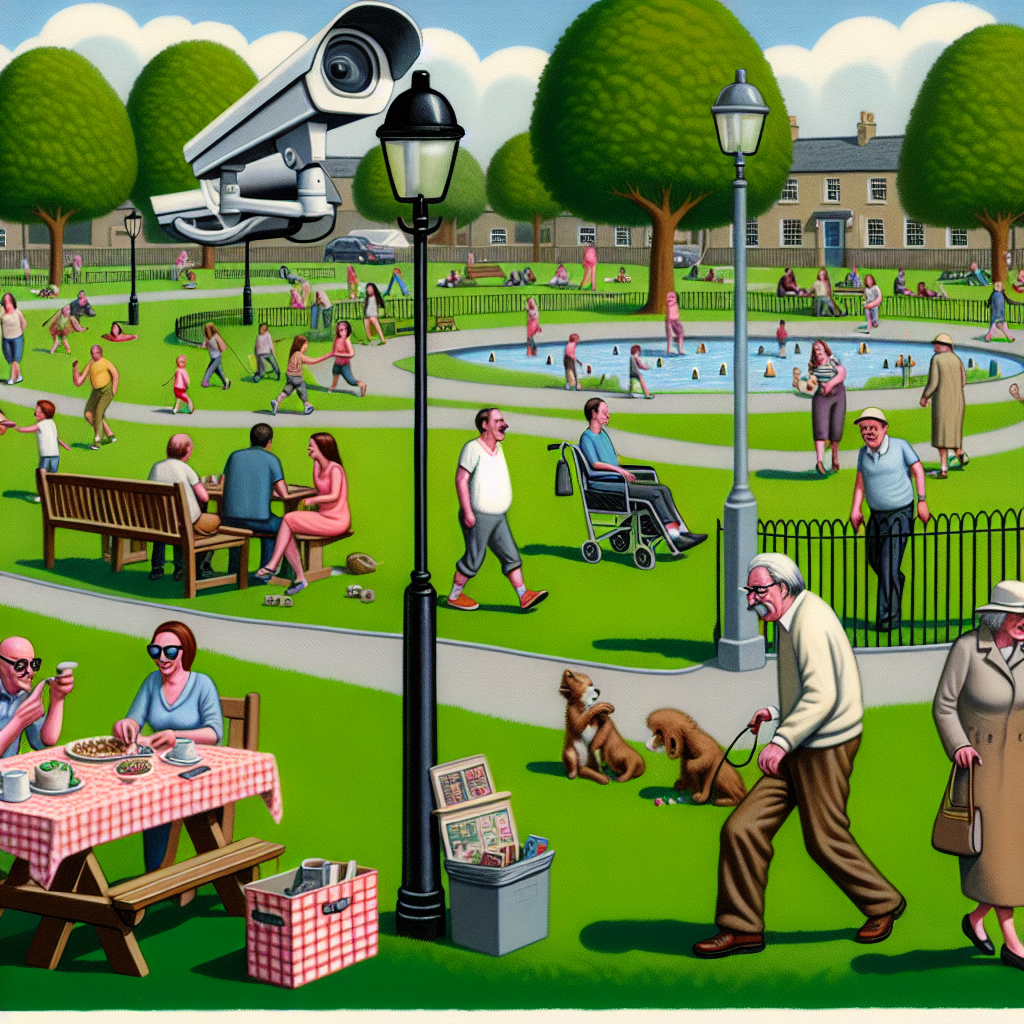**Invisible Watchers: Surveillance and the Silent Ties That Bind Whitmore Gardens**

"Invisible threads are the strongest ties." — Friedrich Nietzsche
As Chesterburgh steadily modernizes, one finds oneself ruminating on the growing prominence of the recently installed network of surveillance cameras in our public parks, particularly in the much-beloved Whitmore Gardens. The initiative, ostensibly undertaken to enhance community safety and deter vandalism, instead reveals a constellation of ethical dilemmas and sociopolitical tensions that merit our closest scrutiny. What does it mean, one might ask, to watch and be watched in a town that prizes its quaint conviviality yet queues eagerly at the altar of technology's promises?
The origins of this surveillance program date back to last fall, when a series of graffiti incidents and minor property damage at Whitmore Gardens provoked an outcry from neighborhood associations. The Chesterburgh Parks and Recreation Board, under increasing pressure from residents who felt the park’s reputation was sullied, greenlit the installation of twelve discreet yet omnipresent cameras by early spring. Their stated purpose was twofold: to protect public assets and provide a deterrent against petty crime. Few, if any, objections surfaced during town council meetings—a testament, perhaps, to the pervasive faith many in Chesterburgh place in the notion of “progress.” Yet, as the cameras quietly began their surveillance, a series of less visible consequences unfurled beneath this veneer of communal betterment.
To examine the implications more closely, I ventured, on a windswept Tuesday afternoon, to the very heart of Whitmore Gardens, where families scattered picnics and children cavorted beneath ancient oaks, unaware, for the most part, of the camera lenses that now effectively ocularize their every move. A pair of seniors engaged in chess, their conversations punctuated by quiet laughter, while younger adults pushed strollers along the paved paths, their phones intermittently lifted to check messages or capture images of dandelion heads caught in the sunlight. What struck me most was how the cameras—though designed to be unobtrusive—imbued the park with an almost palpable tension, a subtle awareness that the private and the public had become entangled in a web of digital observation.
Philosophically, this development gestures toward a Foucauldian panopticism: a social condition wherein individuals internalize the perpetual possibility of surveillance, leading to self-regulation that paradoxically consolidates power in unseen authorities. But who wields this power in Chesterburgh? The Parks Board assures that footage is reviewed only under specific complaints or incidents, emphasizing that privacy is respected, and data retention is minimal. Nonetheless, the lack of transparency surrounding the entities monitoring these cameras and the precise protocols governing data usage unsettles many—myself included. Are we truly being protected, or simply managed, in a society edging closer to an architecture of control camouflaged beneath benevolent terms?
Moreover, the cameras raise questions about the inclusivity and accessibility of public space as a democratic commons. Consider the anecdote recounted by Mrs. Eloise Barnett, the indomitable head of the Chesterburgh Book Club, who recounted her discomfort with the “all-seeing eye” while attending weekly hardcover exchanges beneath the pavilion. “It feels intrusive,” she noted. “Spaces where one might carve out moments of quietude or express oneself freely risk becoming arenas of surveillance, breeding an insidious self-censorship.” Her reflection draws attention to the subtle erosions of spontaneity and community intimacy occasioned by technological oversight.
Further complicating this picture are the town’s unresolved
